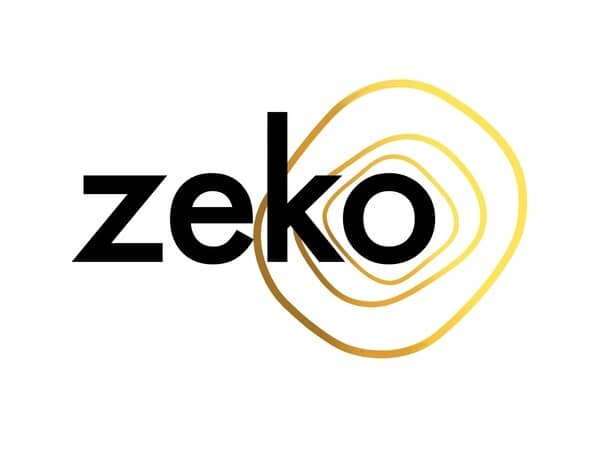订阅 wiki
Share wiki
Bookmark
Zeko Protocol
Zeko Protocol
Zeko 协议是一个构建在 Mina 协议 之上的 Layer 2 生态系统,旨在通过利用先进的零知识证明来增强隐私和可扩展性。该协议旨在使零知识技术和 Layer 2 扩展对于在 Mina 生态系统中运营的开发者和用户来说更易于访问。 [1]
概述
Zeko 协议是由 Zeko Labs 开发和维护的一个开源项目。作为 zk-rollup,Zeko 专注于为 Mina 生态系统带来先进的可编程性和可组合性。它被定位为一个以开发者为中心和社区驱动的平台,提供一套工具和文档,以促进在其网络上创建应用程序。 [2] 该协议的核心目标是通过其 Layer 2 架构实现高效、安全和可扩展的交易。通过在主 Mina 区块链 之外处理交易,Zeko 旨在提高吞吐量和运营效率,超越仅在 Layer 1 链上可能实现的水平。该项目的源代码以 MIT 许可证发布,从而提高了透明度,并鼓励社区参与其开发和治理。 [1]
产品
Zeko 协议生态系统提供一套以开发者为中心的工具,而不是不同的独立产品。这些资源旨在降低在平台上构建 zk 驱动应用程序的门槛。主要产品包括:
- Zeko Prover:一个处理证明生成和递归的核心组件,允许开发者验证跨不同区块链和 rollups 的计算。 [2]
- Zeko SDK:一个软件开发工具包,为开发者提供必要的工具、API 和库。它使他们能够以各种编程语言编写应用程序并将其部署到 Zeko L2,或创建他们自己的自定义 zkAppChains。 [2]
这些资源由全面的文档、API 参考和代码示例提供支持,以指导开发者。 [1]
特性
Zeko 协议的设计以其对零知识技术的使用及其 Layer 2 结构为中心。其主要特性包括:
- 递归零知识证明:该协议集成了先进的零知识证明,特别是递归证明,作为基本组件。该技术用于为交易提供隐私,并允许开发者证明和桥接跨不同区块链、app-chains 或 roll-ups 的任何计算,从而增强跨链可组合性。 [2]
- Layer 2 扩展:作为 Layer 2 解决方案,Zeko 旨在在主 Mina 区块链 之外处理交易。这种链下执行模型旨在提高交易吞吐量,并提高构建在该协议之上的应用程序的效率。 [1]
- 并行交易处理:该协议的架构支持并行证明,与顺序处理相比,这允许更高的吞吐量,从而提高了网络的整体可扩展性和性能。 [3]
- 以开发者为中心的环境:该协议通过提供广泛的指南、工具和文档来强调开发者友好的体验。这种关注旨在简化构建和部署利用零知识证明的应用程序的过程。 [1]
- 开放和社区驱动:Zeko 作为一个开源项目运营,这允许公开审查其代码库,并邀请社区成员为其持续开发和治理过程做出贡献。 [1]
这些特性旨在为去中心化应用程序创建一个可扩展和私有的环境。 [2]
生态系统
Zeko 协议生态系统旨在支持开发者构建和部署 zkApps。它被构建为与 Mina 同构,使开发者可以访问已建立的工具和基础设施。生态系统的关键组件包括:
- o1js:一个用于编写零知识智能合约 (zkApps) 的 TypeScript 库,它是构建在 Zeko 之上的开发者的核心工具。 [2]
- 钱包:该协议支持钱包集成,开发者可以使用 faucet 获取 testnet 资金并开始在网络上构建。 [2]
- 基础设施合作伙伴:该协议构建在 Mina 协议 之上,利用其企业级密码学和快速状态验证。 [4]
该生态系统由一个专注于开发应用程序和增强用户体验的构建者社区提供支持。 [2]
用例
虽然官方文档没有列出具体的、已实现的用例,但该协议的隐私和可扩展性的核心特性表明它适用于各种应用程序。潜在的用例可能涉及需要机密交易、高吞吐量和低交易成本的场景,例如在去中心化 AI、游戏和金融中。 [2] [1]
架构
Zeko 协议的高级别架构概念是一个 Layer 2 网络,它在其底层 Layer 1(Mina 协议)上结算交易。它使用零知识证明来确保链下处理的计算和交易的有效性和完整性。此模型允许 Layer 2 网络继承 Mina 区块链 的安全性,同时为其自身提供可扩展执行的环境。一般文档中未提供其架构组件的详细规范。 [1]
代币经济学
提供的文档中没有关于 Zeko 协议的本地代币的信息。关于代币分配、特定实用程序或治理模型的详细信息尚未公开发布。 [1]
合作伙伴
Zeko 协议与 Mina 生态系统中的关键组织合作,以推进其开发和采用。值得注意的合作伙伴包括:
- Mina 基金会:由于 Zeko 构建在 Mina 协议 之上,因此它与 Mina 基金会 保持着基础关系,该基金会支持底层 Layer 1 区块链。 [4]
- o1Labs:Mina 协议 和 o1js 库的创建者,o1Labs 提供了 Zeko 开发者用于构建 zkApps 的核心技术,使其成为至关重要的技术合作伙伴。 [2]
支持者
Zeko 协议得到了多家风险投资公司和基金会的支持,包括:
发现错误了吗?
